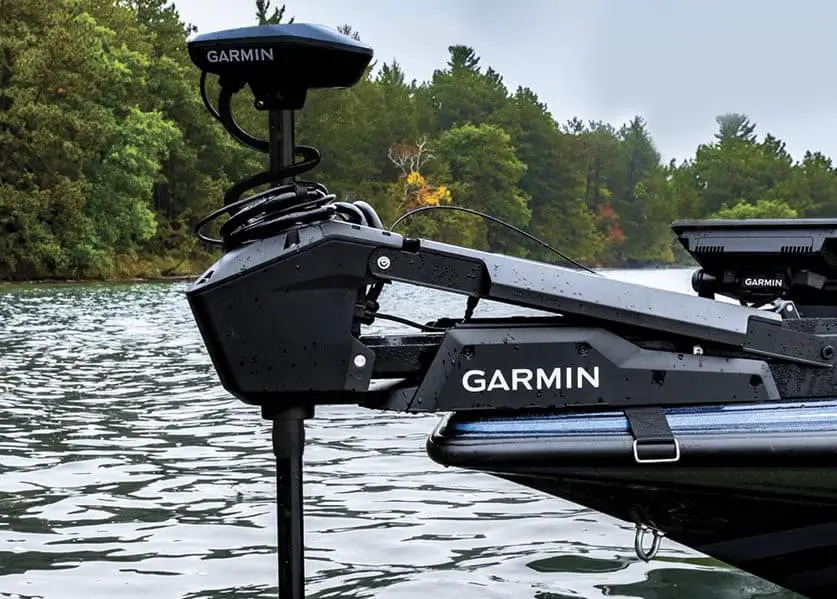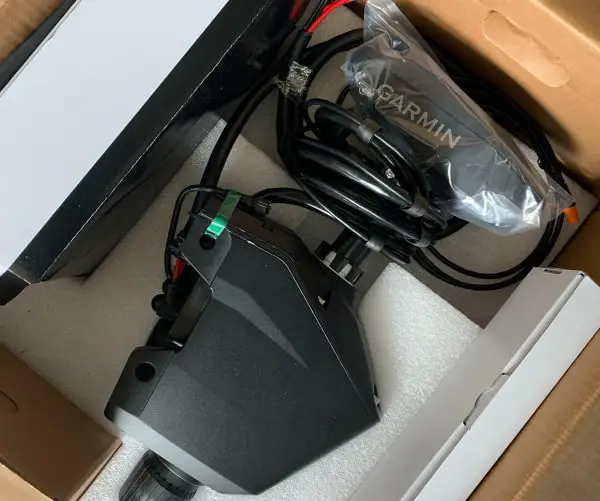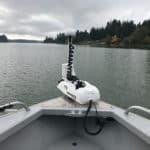This year two electronic devices companies entered the electric trolling motor market, Garmin and Lowrance. Today we are offering an overview of the functions of the Garmin Force trolling motor.
With the advancements in motor innovation and also electronics, creating a motor from the ground up to capitalize on all the readily available features appears to be a rational choice. The market leader, MinnKota, has actually done a fantastic job of including innovation to the existing electric motors, yet sometimes starting from the ground up is a good idea.
Two topics to watch in this short article are the brushless electric motor, and also the point-and-go navigation feature developed right into all brand-new Garmin navigation remotes. So, let’s jump into it, beginning with the electric motor.
Note: most links in this article are Amazon.com Affiliate links, see Affiliate Disclosure, thank you.
Brushless motor
The Garmin brushless electric motor is the first release of a brand-new generation of brushless trolling motors. There are two major advantages to the brushless motor style, efficiency, and variable voltage. Brushless electric motors are understood to last longer than the conventional brushed electric motor, as well as needing less complete energy (amps).
The Garmin Motor includes a variable voltage established in many thanks to its brushless electric motor, and it can run 24 or 36 volts. 24 volts is considered the basic voltage for the best balance of power (thrust) and cost. Thrust output is directly related to the voltage at which the motor operates. When you run the Force on 24 volts it produces 80 pounds of thrust and 100 pounds when running at 36 volts, per Garmin spec sheet.
However, it has a couple of other advantages. As a watercraft owner, you can buy practically any type of device in 24 volts ready to utilize without modification and usually including beginner-friendly instructions.
Another advantage of a variable voltage electric motor is infrastructure. In many cases, you will certainly be able to replace your current electric trolling motor without replacing your whole electrical system. Verify your cable amp capacity, as well as the circuit breaker, and afterward, you can plug in your brand-new motor without a migraine.
Click here to see the Garmin Force on Amazon.com
Sound
From the steering to the brushless electric motor, this electric motor is whisper quiet. When you stand behind the windshield, you have to take a look at the motor to see if it is working since you cannot hear it running or turning.
Propeller
An additional factor behind the efficiency and the speed of this electric motor is its exclusive prop. An amazing attribute of these Force trolling motors, you can utilize props from other brands of trolling motors; however, you cannot utilize a force prop on various other brands of trolling electric motors. So, if you currently have a collection of MinnKota props, keep them. You can utilize them on the Force electric motor as a backup if you require to, but we are sure you will only use them in an emergency because this prop is way better.

Changeable skeg
Besides the amazing prop, there is an exchangeable skeg. The skeg is not steel but rather a composite plastic-type that can be changed out with four screws on the base of the motor. This skeg is readily available everywhere but can be sourced at garmin.com.
Nose cones transducer housing
The Force motor comes standard with the GT 54 UHD transducer is the ultra-high def transducer that currently deals with the echomap ultra devices as well as the 8600 units. The nose cone can be removed, and afterward, you can transform the transducer to numerous various other suitable transducers.
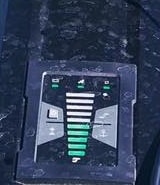
Display panel
The next feature we intend to speak about is the full display screen panel on top of the mounting base. It’s going to show you your motor power level (speed), show you your battery’s level, if you are on anchor lock if you have a great GPS signal, and also if you have Bluetooth link.
The motor power level is indicated by bars that easily can be viewed as you raise or reduce your power from the remote or the foot pedal. Over the bars are multi-color status LEDs that indicate status for batteries, GPS signal, and blue tooth link connectivity with your pedal and also remote. If all three of those LEDs are green, then you are great.
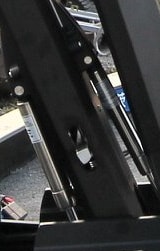
Stow and deploy
My leading feature on the Garmin electric trolling motor is the very easy pull stow and deploy system, with its double shock system. It has a double strut system that works on that main arm. It makes it extremely easy to unlock, deploy, and also stow extremely smoothly. There is no stomping on it, no pushing on it, and it simply pulls up as well as drops down.
Some stow and deploy features of other manufacturers have the motor shaft slide through the steering collar, but not the Force. The largest benefit of not doing that is you can attach Panoptix to your motor and your cabling doesn’t bow or prevent easy stowing of your motor.
Finally, the mounting system has a safety strap to secure your motor in the stowed position. Like everything else with the Garmin system it is included in the box, but don’t forget to install it and use it every time.
Wireless foot pedal
The included wireless foot pedal is a great feature. To begin, it uses 2 AA batteries. They into an area under the top of the pedal and can be easily changed. According to Garmin, they’ll operate on 2 AA batteries for one year of average usage. So, we still believe that’s a little ambiguous, yet that’s what they’re stating “a year of typical use.”
It does have an option to hardwire power to the foot pedal if you wish to. Yet once more, it is wireless, and we don’t want to give that up. You can take the foot pedal and place it on the back deck of your boat, as well the traditional location, upfront. The format of the foot pedal is extremely standard. When you take a look at the available functions on the pedal, they include anchor on, prop on, speed control wheel, and the steering pedal.
The best way to explain the feeling is it feels significantly like a cable steer, you put it there, and it stays there. It’s not going to jump about on you, and It’s smooth to regulate our experience. The pedal does have a sensitivity setup. There is a little set screw you can change to adjust it to where you want the resistance to be. If you desire it to be a little bit less of a stiff feeling under your foot or if you desire it stiffer, you can adjust the screw. It is a little bit smoother and also simpler to manage if the setup is stiffer.
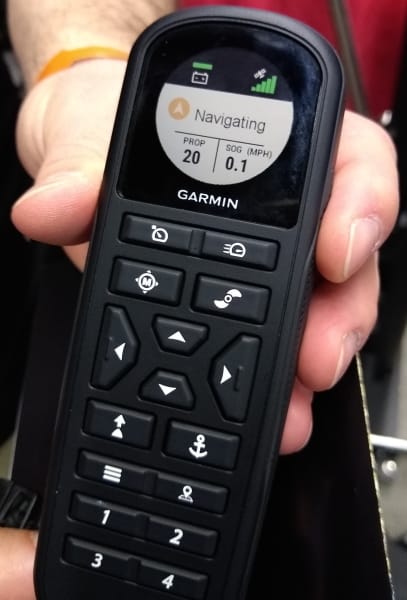
Remote
The push-button remote control comes standard with the Garmin Force. You don’t have to pay an extra $99, unlike other makers. You can easily see all your functions by going through the menus. You can set up routes, set up waypoints, or anything you require to do goes right through the remote.
Among Garmin’s newest attributes on this system and also their gas kicker auto-pilot system is the point-and-go feature. You can point your remote in any direction with the push of a button, and your electric motor will steer in that direction. There is compass calibration needed to take full advantage of the point-and-go feature, but the nice point is the screen on the remote helps you with its step by step. You will need to carry out calibration while on calm water, so plan for that. Calibrating the Force can be a long procedure that might not turn out the first couple of times, however, if you keep at it, you will certainly be compensated with wonderful accuracy.
Both the remote and the foot pedal are Bluetooth based and should come paired when you get them. If you need to replace them, the pairing directions are extremely simple.
Pricing
I was told pricing is set from the manufacturer by the Garmin rep at a recent sporting goods trade show. There are two various shaft sizes available, 50 inches and 57 inches, which make up the price distinction. At the time of this article, it was a $100 difference in the two prices.
Also, consider that if you wish to integrate your motor with your electronics (fishfinder), you might need to upgrade to a newer unit to be fully compatible. An upgrade of your head unit and transducer can be very expensive.
Click here to see the current price for a 7″ unit on Amazon.com.
Garmin
As a company, Garmin has a good reputation, and I don’t see that changing in the near future. The company’s products are based on GPS electronics, marine, auto, aviation, wearable, and handheld units, among other products.
I have used a Gamin depth finder for many years featuring SideVü and Panoptix.
Final thought
The Garmin Force is an electric trolling motor that is making an influence on the market. We think it will certainly generate a brand-new generation of motors. Garmin is an electronic devices leader and is currently leading the crowd in the electric trolling motor sector.
A lot of user reviews of the motor have been overwhelmingly favorable. We are waiting to see if the new products in the market are going to fill gaps or eliminate a company from the marketplace because we feel this motor is here to stay.
Click here to see our review of the Garmin Force Electric Trolling Motor

